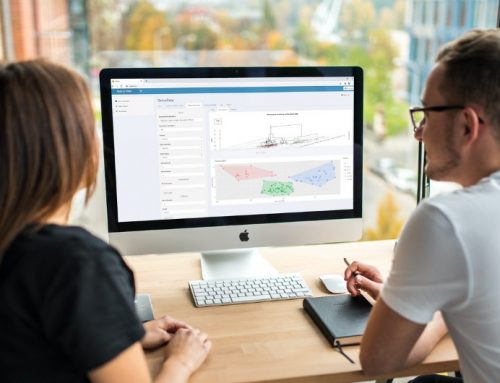Responsible use of antibiotics in pig production – new recommendations from the FAO
- Antibiotic resistance – when antibiotics stop functioning – is threatening millions of human lives and the health, welfare, and productivity of livestock.
- The more we use antibiotics, the greater the chance that antibiotic resistance will develop. Therefore, it is important that we use antibiotics only when they are really needed.
- Disease prevention – good animal husbandry, biosecurity, and vaccination – is the way to reduce the need for antibiotics in the herd. Antibiotics should be regarded as the very last resource for fighting disease.
The Food and Agriculture Organization of the United Nations (FAO) has published a document that warns of the problems associated with the extensive use of antibiotics in animals, and makes a series of recommendations to reduce the recurrence of their use.
Antibiotics have been a revolutionary discovery for curing infections in animals and humans. However, during the last few decades it has emerged that more and more antibiotics are not functioning as expected due to this massive use of these drugs: they do not cure the disease or kill the bacteria that cause it.
Why are antibiotics no longer working as expected?
“This is because the particular bacteria has become resistant to the antibiotic.Antibiotic resistance is an increasing threat to human and animal health worldwide ” emphasizes FAO.
It is estimated that in the coming decades there will be several million deaths annually and a significant drop in livestock production attributable to infections by resistant bacteria. The fact that disease-causing bacteria develops resistance to the drug that originally killed them is a serious problem.
To protect the effectiveness of antibiotics, it is fundamental to reduce their overall use and restrict it to only when strictly necessary.
According to the FAO, there may be a spread of resistant bacteria from livestock to humans and, furthermore, farmers are at the highest risk of infection.
Does the use of antibiotics influence global production?
Globally, antibiotics are used more for livestock than for humans to prevent diseases and make animals grow faster, essential for animal production. These drugs are mixed in feed and their use is especially widespread in the pig and poultry sectors.
The answer to the question that starts this section is no. Many countries of the European Union have banned and / or restricted the use of antibiotics for these purposes and, even so, animal productivity has not been reduced.
These data show that there are other options available to farmers and thus attenuate the development of resistance to antibiotics. In addition, there is another advantage: these options can protect the efficacy of the same antibiotics in livestock production since, if implemented, their reduced use will lead to fewer chances of developing resistance.
FAO recommendations to reduce the use of antibiotics in animals
Thus, the organization offers advice to reduce the need for antibiotics and, in addition, on how to use them responsibly and efficiently when it is necessary. These guidelines have been followed by pig farmers in different countries and “have proven their success without hindering productivity.”
The transition to animal farming with low use of antibiotics is a stepwise process that must be carefully monitored. If we want to keep the animals healthy and with high levels of productivity, a series of measures must be followed. They fall into three levels of disease prevention, which are arranged in hierarchical order:
1. Good animal husbandry
This includes several common elements applicable for most kinds of animal-rearing. Still, it should be noted that piglets need special attention given their vulnerability and stressors.
Common aspects in all species:
Good quality food and water, in terms of both nutrition and hygiene.
Air quality to reduce the risk of respiratory infections.
Some factors that generate poor air quality are densely populated stables with inferior ventilation systems, being a prevalent underlying factor in the common respiratory problems in growers
Provide bedding materials so that animals can express their natural behavior (reducing stress levels and improving resistance to infections).
Keep track of production, records of disease incidents and the use of medicines.
Special care for swine:
When the litters of piglets are very large, they are smaller and weaker, being more difficult to thrive and having a greater number of deaths. Also, some may starve if the number of piglets exceeds the number of the teats of the sow.
It is essential that at the time of the farrowing we have adequate space, avoiding the crushing of the piglets and providing them with a dry, clean and warm (heat lamp) space.
It is highly recommended not to wean the piglets before 28 days, as they are not robust enough to survive without the sow and /or antibiotics. Previously, post-weaning diarrhea was considered inevitable without the routine use of antibiotics, but it has now been demostrated that this can largely be prevented with a smooth transition in feeding regimen. You may start giving feed twice a day to the piglets during their first week of life, and then four times a day the week before weaning.
2. Biosecurity
Biosecurity measures aim to protect animals by preventing infections from entering the herd, as these can enter and spread through in many ways. The most common form of infection spread on a pig farm is through another farm or by a breeding boar. Therefore, using artificial insemination is safer than taking the sow to a boar that is not part of the herd, or vice versa.
Another way to mitigate the risk of infections entering the farm is to keep newly arriving pigs in quarantine from the other animals for at least three weeks, and to monitor them for signs of disease on a daily basis
FAO advises minimizing the number of farms that you get pigs from and trying to source pigs from the same farms over time.
In pig farming, the biosecurity within the farm is also important. If the farm is large and has several building compartments or groupings of pigs, you should avoid mixing and moving pigs, because this increases the risk of exposing them to new infections. This mean that you should keep pigs of the same age together (age segregation).
Some recommendations:
In your daily routines, start with the youngest piglets and finish with the oldest growers.
It is indispensable to change clothes, boots and tools/instruments and wash hands when moving from onebuilding/compartment to the next.
3. Vaccines
The systematic use of vaccines is a way to prevent specific infectious diseases, always supervised by a veterinarian
Antibiotics may be needed when a pig becomes sick despite the disease prevention measures described.
Always under the following principles:
Only use antibiotics when based on a diagnosis of disease by a veterinarian.
Treat animals individually with antibiotics
Reference: Food and Agriculture Organization of the United Nations (FAO). (2021). How to use antibiotics effectively and responsibly in pig production – for the sake of human and animal health. http://www.fao.org/3/cb4158en/cb4158en.pdf





